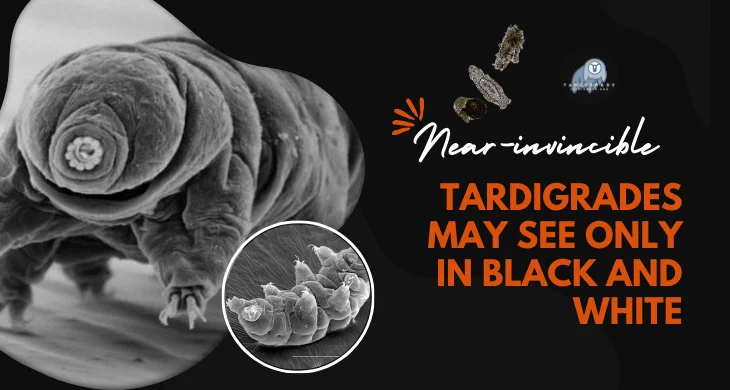Embark on a fascinating exploration into the microscopic realm of near-invincible tardigrades, where their extraordinary resilience is coupled with a unique visual perspective. Recent studies suggest that these tiny creatures, renowned for surviving extreme conditions, may perceive the world exclusively in black and white. Join us as we delve into the intriguing insights that unveil the monochromatic vision of these remarkable micro-animals, adding another layer to the mysteries of tardigrade biology.
Visual Insight
Embark on an exploration of tardigrade vision, delving into recent research that hints at a unique sensory dimension. Scientists propose that these microscopic marvels may possess a distinctive visual system, offering a glimpse into a world of black and white. The intriguing possibility raises questions about how these near-invincible creatures perceive their surroundings, adding a layer of complexity to their already extraordinary existence. As we unravel the mysteries of tardigrade biology, the revelation of potential monochromatic vision showcases the intricate adaptations that contribute to their resilience, presenting a captivating intersection of science and the microscopic wonders of the natural world.
Adaptation Wonders
Dive into the realm of adaptation wonders as we unravel the secrets behind the resilience of tardigrades. The microscopic marvels renowned for their extraordinary survival capabilities. These remarkable creatures employ a spectrum of adaptive features that enable them to thrive in extreme environments. Tardigrades can enter a state of cryptobiosis, Essentially shutting down their metabolic processes, allowing them to withstand harsh conditions like desiccation, Radiation & extreme temperatures. This incredible survival tactic has contributed to their near-invincible reputation.
In addition to cryptobiosis, Recent research hints at another fascinating adaptation—potential monochromatic vision. The possibility that tardigrades perceive their surroundings exclusively in black and white adds a new layer to their adaptive toolkit. Understanding these features sheds light on the evolutionary strategies that have allowed tardigrades to persist for millions of years, showcasing their ability to navigate and endure diverse and challenging ecosystems.
As we uncover these adaptation wonders, the story of tardigrades becomes even more awe-inspiring, emphasizing the intricate balance of traits that contribute to their resilience in the microscopic world. This exploration unveils the marvels of adaptation that make tardigrades not just survivors but thriving inhabitants of extreme environments, capturing the imagination of scientists and nature enthusiasts alike.
Microscopic Marvels
Embark on a journey into the extraordinary realm of tardigrades, microscopic marvels celebrated for their near-invincible resilience in the face of extreme conditions. Commonly referred to as water bears, these minuscule creatures display unparalleled survival capabilities, enduring desiccation, radiation, and extreme temperatures. Their microscopic size belies their remarkable toughness, making them the focus of scientific fascination. Delving into the world of tardigrades unveils a testament to adaptability and endurance, showcasing the awe-inspiring capabilities of life at the microscopic scale, where these tiny beings navigate and thrive in conditions that would challenge most other life forms.
Scientific Implications
The revelation of potential monochromatic vision in tardigrades carries profound scientific implications, offering a unique window into the evolution and diversity of sensory capabilities among microscopic organisms. The study of vision in these resilient creatures opens avenues for understanding the adaptive strategies that have shaped life at the microscopic scale.
Examining tardigrade vision provides insights into the ecological niches they inhabit and the challenges they face. The ability to perceive the world in black and white suggests an adaptation finely tuned to their specific environments, raising questions about the ecological factors that may have influenced the development of this sensory trait.
Furthermore, this discovery contributes to our broader understanding of sensory evolution in microscopic organisms. By exploring the nuances of vision in tardigrades, scientists gain valuable information about the selective pressures that drive the development of sensory systems in the microscopic realm. This knowledge has implications beyond tardigrades, informing our understanding of how other microorganisms navigate their environments and adapt to diverse ecological conditions.
In essence, the scientific implications of tardigrade vision extend far beyond the confines of their tiny habitats. They underscore the intricacies of evolutionary processes at the microscopic level, enriching our comprehension of the diverse strategies employed by these resilient organisms to interact with and thrive in their microscopic worlds.
Ongoing Discoveries
The exploration of tardigrades is an ever-evolving journey, with ongoing research poised to unveil further mysteries and showcase the remarkable attributes of these microscopic marvels. As scientists delve deeper into the microscopic world, discoveries regarding tardigrade vision represent just a fraction of the potential revelations awaiting exploration.
Ongoing research initiatives aim to unravel the complexities of tardigrade biology, shedding light on their behaviors, Adaptations & ecological roles. Advances in technology & microscopy techniques continue to provide unprecedented insights, allowing scientists to explore the intricacies of tardigrade life at a level of detail previously unimaginable.
These ongoing discoveries contribute not only to our understanding of tardigrades but also to broader scientific inquiries into the microscopic realm. Tardigrades, with their unique adaptations & resilience, Serve as valuable subjects for studying life at the smallest scales and offer insights that may have applications in diverse fields, from biology to materials science.
As we await the unfolding chapters of tardigrade research, The ongoing discoveries promise to captivate scientists and enthusiasts alike, Fostering a deeper appreciation for the complexity and adaptability of life at the microscopic level. The microscopic world of tardigrades continues to be a source of inspiration and curiosity, with each new finding opening doors to a richer understanding of the intricate web of life on Earth.
Conclusion
In conclusion, the tantalizing prospect of near-invincible tardigrades perceiving their world exclusively in black & white adds a captivating layer to our understanding of these microscopic wonders. As research unfolds, The revelation of potential monochromatic vision paves the way for further exploration, Reminding us that the resilience and adaptability of life at the microscopic scale continue to be a source of scientific fascination and discovery.
FAQ’S
- What is the significance of tardigrades seeing only in black and white?
- A: The potential monochromatic vision in tardigrades offers insights into their sensory adaptations and raises questions about how they perceive and interact with their environments.
- How was the discovery of tardigrade vision made?
- A: Recent research suggested the possibility of tardigrades having a unique visual system, perceiving their surroundings exclusively in black and white.
- Why do scientists study tardigrades?
- A: Tardigrades are of scientific interest due to their incredible resilience and ability to survive extreme conditions, providing valuable insights into adaptation and survival strategies.
- What other adaptations do tardigrades have?
- A: Tardigrades are known for cryptobiosis, a state where they can withstand desiccation, radiation, and extreme temperatures. They showcase remarkable adaptations for survival.
- How small are tardigrades, and where are they found?
- A: Tardigrades are microscopic animals, typically ranging from 0.1 to 1.5 millimeters in size. They can be found in diverse environments, from deep-sea trenches to mountaintops.

